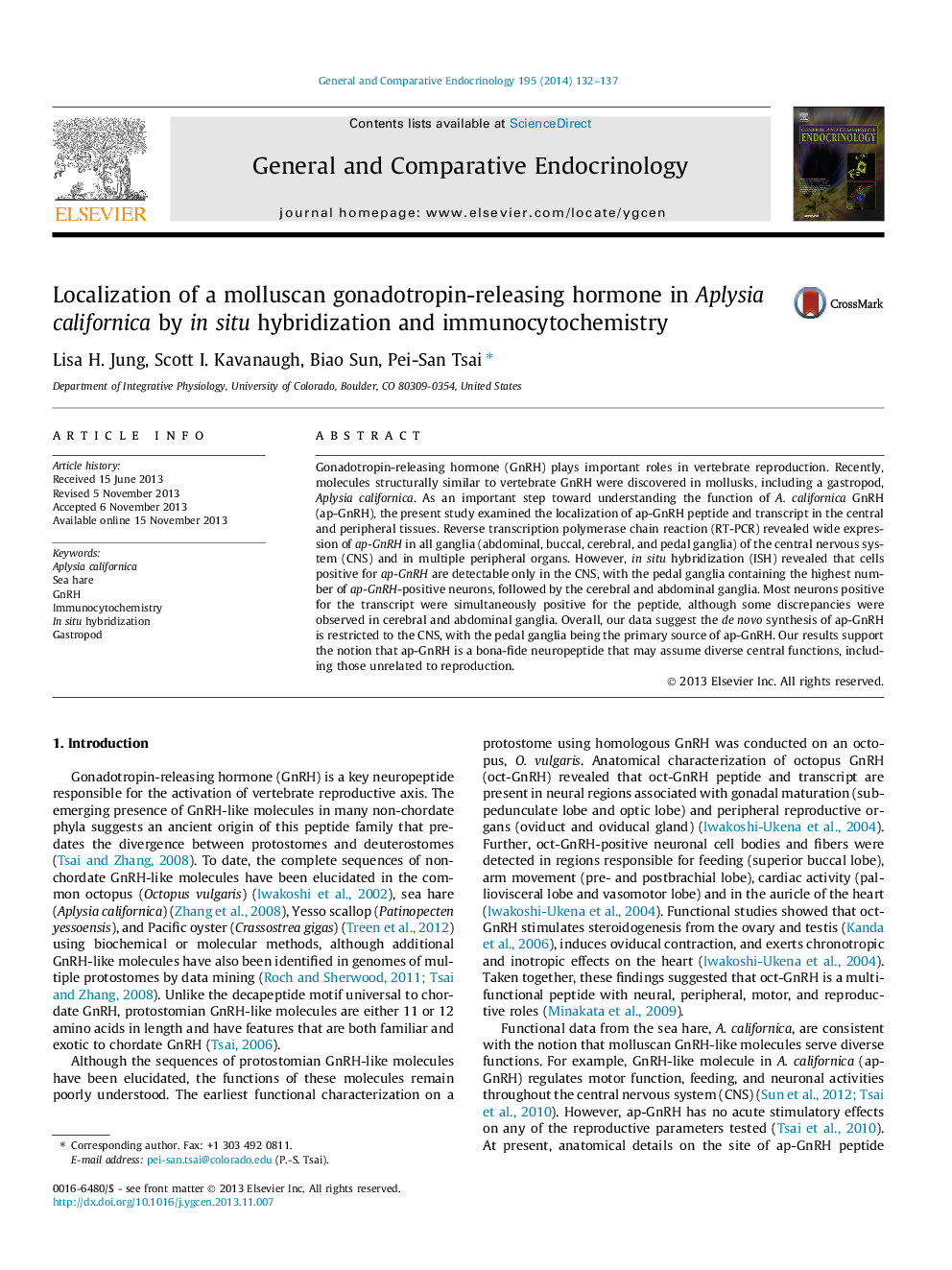| Article ID | Journal | Published Year | Pages | File Type |
|---|---|---|---|---|
| 5901189 | General and Comparative Endocrinology | 2014 | 6 Pages |
Abstract
Gonadotropin-releasing hormone (GnRH) plays important roles in vertebrate reproduction. Recently, molecules structurally similar to vertebrate GnRH were discovered in mollusks, including a gastropod, Aplysia californica. As an important step toward understanding the function of A. californica GnRH (ap-GnRH), the present study examined the localization of ap-GnRH peptide and transcript in the central and peripheral tissues. Reverse transcription polymerase chain reaction (RT-PCR) revealed wide expression of ap-GnRH in all ganglia (abdominal, buccal, cerebral, and pedal ganglia) of the central nervous system (CNS) and in multiple peripheral organs. However, in situ hybridization (ISH) revealed that cells positive for ap-GnRH are detectable only in the CNS, with the pedal ganglia containing the highest number of ap-GnRH-positive neurons, followed by the cerebral and abdominal ganglia. Most neurons positive for the transcript were simultaneously positive for the peptide, although some discrepancies were observed in cerebral and abdominal ganglia. Overall, our data suggest the de novo synthesis of ap-GnRH is restricted to the CNS, with the pedal ganglia being the primary source of ap-GnRH. Our results support the notion that ap-GnRH is a bona-fide neuropeptide that may assume diverse central functions, including those unrelated to reproduction.
Related Topics
Life Sciences
Biochemistry, Genetics and Molecular Biology
Endocrinology
Authors
Lisa H. Jung, Scott I. Kavanaugh, Biao Sun, Pei-San Tsai,
